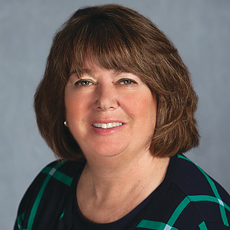
When it comes to predicting what the seniors housing market will do, “it’s time to roll up your sleeves and…understand what’s going on in your properties and in your markets,” National Investment Center for Seniors Housing and Care Chief Economist Beth Mace told those attending an Oct. 2 session at the organization’s national conference in National Harbor, MD.
Some indicators suggest that further cap rate compression (and, therefore, no bubble) will occur in the market, Mace said. For instance, many say that seniors housing is becoming a core property type, today’s risk premium may be too high, pricing may be more rational than in 2008 (when the last bubble occurred), greater transparency exists now, the market is more disciplined than before, and long-term demographics support the market.
“On the other hand, I hear a lot about unrealistic underwriting assumptions right now,” Mace said. And Federal Reserve monetary policy is aggressive, development is high, select metropolitan areas have too much supply and real estate is cyclical in nature, she added.
Mace also discussed transactions, occupancy, supply, construction, absorption and rent growth.
“The senior housing market had the highest level of transactions ever recorded as of the second quarter of 2015,” Mace said. “There’s a lot of interest in this sector. …There’s a lot of new capital coming into the sector.” Investment, based on a four-quarter moving average, was $17 billion in seniors housing and $6 billion in skilled nursing, she added. As of the second quarter of 2015, the rolling four-quarter average price per unit was $173,000 for seniors housing and $72,500 for skilled nursing.
Occupancy, Mace predicted, “is going to kind of flatten out to where we are right now.” She said she views this trend positively “because there’s a fair amount of inventory coming into the market, and the demand is able to match that inventory. If I look forward, I’m expecting over the next four quarters, we’re going to see demand largely match supply, and we’ll see about 11,000 units of each in terms of net absorption and in terms of inventory going forward.”
Regarding supply coming into the market, Mace sees “nothing worrisome” as far as continuing care retirement community inventory and said that about 2% of the inventory for the entire independent living market had come into the market recently. For assisted living, about 4.5 to 5% of the entire inventory came into the market in the most recent period, Mace said. “There’s definitely new supply and new product coming into the market,” she added, even though the level isn’t as high as 1999 to 2000, when 8% of the existing assisted living inventory came into the market. The percentage of new memory care inventory is high, Mace said, but she added that overall it is a “fairly small inventory.”
Construction, as with the economy and transactions, cycles up and down, and activity varies by market, Mace said. Right now, of the 31 largest metropolitan areas that NIC tracks, the most growth in independent and assisted living is occurring in Atlanta, Chicago, Dallas, Houston, Minneapolis, New York and San Antonio—“a lot of the Texas markets, which have fewer regulations and fewer restraints on overall development activity,” Mace noted.
Of the 99 total markets that NIC tracks, some areas, such as Pittsburgh; Youngstown, OH; and Madison, WI, have not seen any construction. Eighty markets have seen some type of construction, and the most active markets are Atlanta; Chicago; Columbus, OH; Dallas; Houston; Minneapolis; New York; Sacramento, CA; and San Antonio.
But “when you look at supply, you also need to look at demand…relative to the supply” and factors such as job growth and income, Mace said.
Markets that have had fair absorption and a fair amount of supply, she added, include Denver, Houston and Minneapolis. In Denver, absorption has not matched supply, Mace said.
Rent growth has been 2 to 2.5% in independent and assisted living, she said.
“If interest and cap rates go up and you want to keep your values, you’re going to have to worry about [net operating income] growth,” Mace told attendees.



